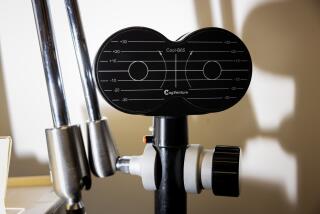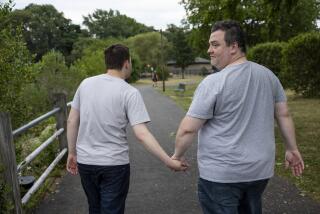Bursts of magnetic energy may ease severe depression
For many depression sufferers, antidepressants such as Prozac have lessened or even eradicated the dispiriting gloom that shrouds their lives. But at least a million Americans have found little or no relief in medication, leading some to believe that escape from depression is not possible.
An experimental treatment may help an estimated 20% to 30% of those with severe depression. Called transcranial magnetic stimulation (TMS), it applies short bursts of magnetic energy to a patient’s skull, stimulating regions of the brain that regulate moods.
“This could be a potent new weapon in our therapeutic arsenal,” says Dr. Sarah H. Lisanby, director of the Magnetic Brain Stimulation Laboratory at Columbia University / New York State Psychiatric Institute in New York.
Developed in 1985, transcranial magnetic stimulation was inspired by electroconvulsive therapy (ECT), in which people are given electric shocks to their brains to induce brief seizures and ease symptoms.
Although electroconvulsive therapy can be effective for people suffering from severe and intractable depression, it can cause serious side effects, such as confusion and memory impairment.
“We thought that by using a milder and more localized stimulation, we could relieve depression without the memory disturbance,” says Dr. David H. Avery, a psychiatrist at the University of Washington School of Medicine in Seattle, who has studied transcranial magnetic stimulation.
Since then, techniques have been refined, and new brain scanning tools, such as positron emission topography and magnetic resonance imaging, have enabled scientists to better identify the brain regions that govern our emotions. As a consequence, researchers can aim the magnetic beams with more precision, and they have a better understanding of how much stimulation is needed, says Lisanby.
In a typical session, a doctor holds a powerful electromagnetic coil, which produces about the same amount of energy as an MRI machine, on the patient’s forehead. The device creates a pulsating magnetic field that passes through the skull and seems to stimulate the electrical circuits in the brain.
Patients are awake during the procedure, which normally lasts for about 45 minutes. They may feel a light tapping on their head with each pulsation, and some experience mild scalp contractions or headaches. But they don’t experience side effects that would prevent them from resuming normal activities immediately after treatment.
Unlike the magnets sold at health food stores for various purposes, which aren’t at all powerful, the stimulators create enough electrical current to prompt nerve cells in the brain to fire. This seems to energize brain areas by stimulating blood flow and spiking levels of mood-enhancing brain chemicals, such as dopamine and serotonin.
“What is clear is that TMS triggers changes in brain function,” Avery says.
Tests conducted in the last decade have yielded encouraging results. A 2002 Columbia University analysis of 25 small studies indicated that, overall, TMS patients experienced a 28% reduction in symptoms compared with a 7% reduction in those who received sham treatments.
A new trial, which began in early 2004 and will eventually involve 286 patients at 16 centers nationwide, is pivotal, says Lisanby. “We’re hopeful that, if positive, these results could lead to TMS being approved for treating depression,” she says.
*
(Begin Text of Infobox)
Other uses for TMS treatment
Transcranial magnetic stimulation may be an effective treatment for other brain disorders.
Yale University researchers are using magnets to stimulate speech-processing areas of the brain in an effort to quiet auditory hallucinations associated with schizophrenia.
Scientists at the National Institutes of Health in Bethesda, Md., are studying the procedure’s effectiveness in reducing epileptic seizures. They’re also studying its potential to ease symptoms of Parkinson’s disease and to help stroke patients undergoing rehabilitation.






